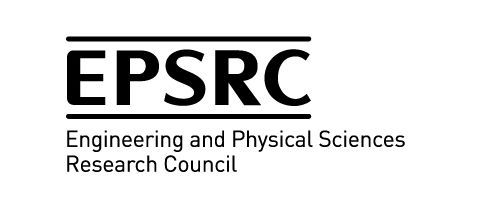Research project
Assuring the quality of design descriptions through the use of design configuration spaces
- Start date: 1 October 2018
- End date: 30 September 2021
- Funder: Engineering and Physical Sciences Research Council (EPSRC)

Description
Core research team:
-
Professor Alison McKay (Project Lead), School of Mechanical Engineering, University of Leeds
-
Dr Mark Robinson, Leeds University Business School
-
Professor David Hogg, School of Computing, University of Leeds
Project background
The success of today's global supply networks depends on the efficient and effective communication of design descriptions (including design intent and shape definitions) that suit the requirements and capabilities of the wide range of engineering functions, processes and suppliers involved in the delivery of products to markets.
Technical product data packages are used to provide these design descriptions. At a recent industry summit, a representative of Boeing noted that some 40% of the technical data needed to create a product resides outside the shape definitions in the technical product data package.
The focus of this project is on the Bills of Materials (BoMs) that are integral parts of both shape definitions and the 40% of non-shape related product data. BoMs are fundamental because they act as integrators: adapting detailed design descriptions to suit the needs of particular engineering processes. The ability to reconfigure BoMs while maintaining internal consistency of the technical data package (where all BoM configurations are complete and compatible with each other) is a major challenge.
This proposal builds on a feasibility study that explored the use of embedding* to associate multiple BoMs with a single design description. From an engineering design perspective, based on discussions with four local SMEs and work on a case study related to a Rolls-Royce combustion system, we uncovered an urgent industry need to be able to associate multiple BoMs with one or more design descriptions.
This need has remained hidden because current design technologies tend to subsume BoMs in proprietary data representations. However, engineers use BoMs and other design structures to adapt design descriptions for specific purposes. For this reason, new design technologies are needed that make BoMs and other design structures available for engineers to work with directly.
From a design technology perspective, we have demonstrated that hypercube lattices can act as computational spaces within which BoMs can be reconfigured. However, the generated lattices are vast and, although we made in excess of hundred-fold improvements in the speed of lattice generation after consultation with the Leeds Advanced Research Computing team, the problem remains exponential in nature.
For this project, the lattices will remain in the background, as a part of the technical apparatus. From an organisational psychology perspective, the ability to reconfigure BoMs creates opportunities for new ways of managing engineering knowledge in product development systems that take account of human and organisational behaviours, and individual preferences.
* Embedding is a mathematical mechanism that allows one instance of a construct to be superimposed on another.
<iframe width="560" height="315" src="https://www.youtube.com/embed/gbyPhurHjWg" frameborder="0" allow="accelerometer; autoplay; encrypted-media; gyroscope; picture-in-picture" allowfullscreen></iframe>
Research overview
The quality of design descriptions, such as the technical data packages that are developed through engineering product development processes, has a significant impact on the performance of a product through its life. The aim of this project is to establish theoretical foundations for the reconfiguration of bills of materials (BoMs) with a view to assuring the consistency of technical data packages when the structures and compositions of design descriptions are modified for use in specific engineering or downstream activities. The following objectives are being pursued.
-
To establish, in collaboration with partners including Catapult Centres and the University of Leeds Living Lab project, four end-user scenario-driven case studies, each including either an engineering technical data package or a Building Information Model (from the Leeds Living Lab) with multiple BoMs.
-
To elicit key features of BoMs within the case studies to inform the specification of test cases for use in the evaluation of methods and tools for the reconfiguration of BoMs.
-
To design and prototype a series of open-source software prototypes, through a staged software engineering process, that can be used to explore issues in the reconfiguration of BoMs through the navigation and exploration of design configuration spaces.
-
To evaluate the software prototypes using the test cases, illustrate their potential with the case studies, and feed learning (in the form of user requirements) back into the staged software engineering process.
-
To explore the exploitation of the research outcomes to predict the impact of early design decisions on downstream activities with an initial focus on (i) BoM configurations and their effect on supply chain structures and required supplier capabilities, and (ii) potential applications of machine learning to generate manufacturing planning information such as assembly sequences.
-
To explore opportunities in other disciplines for trans-disciplinary learning and wider application of the scientific methods that underpin this research by building relationships with colleagues in areas such as cross-scale modelling of molecular structures, metabolic pathways in biological systems and the implementation of building information models in civil engineering.
More information can be found on the Configuring Spaces website.

Project reference number: EP/S016406/1.
Project website
https://configuration-spaces.leeds.ac.uk/design-config-spaces/

